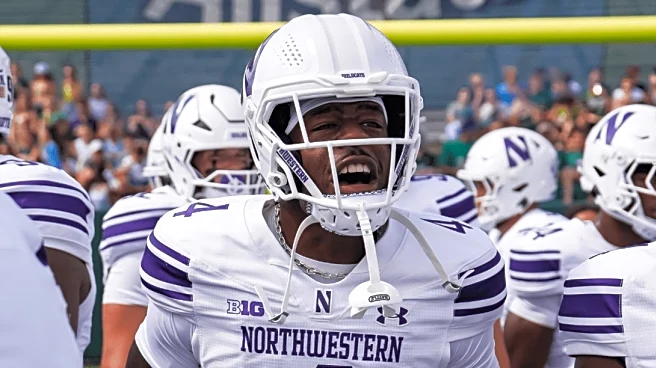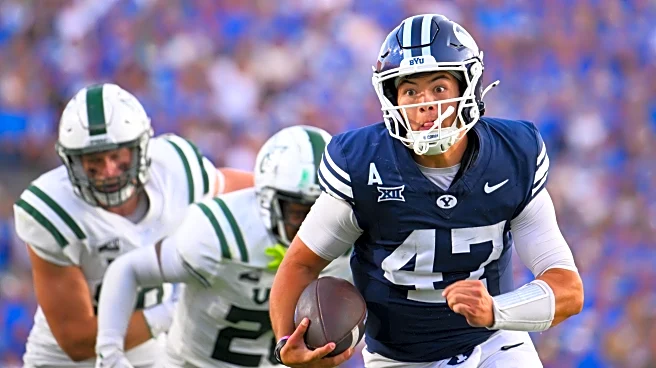What's Happening?
BYU is set to open its 2025 football season against Portland State at LaVell Edwards Stadium. The game will feature the debut of Bear Bachmeier, the first true freshman quarterback to start a season opener in BYU history. This development follows the departure of Jake Retzlaff to Tulane amid a suspension. The matchup is expected to be a blowout, with BYU facing an FCS team that recently lost 42-0 to Tarleton State. Despite the anticipated outcome, BYU players and coaches are focused on gaining valuable experience and improving their performance, particularly in the running game and turnover margin.
Why It's Important?
The game is significant for BYU as it marks the beginning of a new era with Bear Bachmeier at the helm. It provides an opportunity for the team to assess its strengths and weaknesses early in the season. For Portland State, playing against an FBS team like BYU offers exposure and experience against higher-level competition. The outcome could impact BYU's standing in the AP Top 25 poll, especially if they manage a convincing win. The game also serves as a test for BYU's defense, which aims to achieve a shutout, building momentum for the rest of the season.
What's Next?
Following the game, BYU will evaluate Bachmeier's performance and make necessary adjustments to their strategy. The team will focus on maintaining a high completion percentage and improving their running game throughout the season. Portland State will look to learn from their mistakes and improve their performance in subsequent games. The results of this matchup could influence BYU's approach in future games, particularly in terms of player rotations and depth development.
Beyond the Headlines
The debut of a true freshman quarterback in a season opener is a rare occurrence and highlights BYU's confidence in Bachmeier's abilities. This decision reflects the team's long-term strategy and investment in developing young talent. The game also underscores the challenges faced by FCS teams when competing against FBS opponents, highlighting disparities in resources and talent levels.













